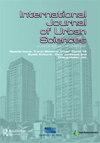The evolution of urban innovation space and its spatial relationships with talents’ living demands: evidence from Hangzhou, China
IF 3
3区 工程技术
Q2 ENVIRONMENTAL STUDIES
引用次数: 3
Abstract
ABSTRACT Urban innovation space functions not only as physical carriers for innovative activities but also as coordinating entities for balancing innovation production and talents’ living demands in the city. However, existing studies pay inadequate attention to the demand side of high-skilled talents who build urban innovation space. This paper, therefore, focuses on the evolution of urban innovation space and its spatial relationships with supporting factors (i.e. high-tech enterprises, intellectual carriers, public transportation, commercial facilities) satisfying talents’ living demands in Hangzhou, China. It is found that the urban innovation space in Hangzhou has evolved from a monocentric pattern towards a polycentric one, which is coined as ‘one main core, three sub-cores and six groups’. The spatial agglomerations of high-tech enterprises reflect the recent expansion trends of urban innovation space. The intellectual carriers have intensified a high-level spatial agglomeration of innovation in central and peripheral urban areas. Transportation conditions operate to enhance the agglomeration and selective dissemination of urban innovation space along key traffic corridors. Urban innovation space is primarily located within the service scope of business and commercial facilities. In short, the four supporting factors spatially match well with the urban innovation space in Hangzhou at present, which contributes to sustainable innovation and people-oriented urban development.城市创新空间演变及其与人才生活需求的空间关系——以杭州为例
城市创新空间不仅是创新活动的物质载体,而且是平衡城市创新生产与人才生活需求的协调实体。然而,现有研究对构建城市创新空间的高技能人才需求侧关注不足。因此,本文将重点研究杭州城市创新空间的演变及其与满足人才生活需求的支撑因素(高新技术企业、智力载体、公共交通、商业设施)的空间关系。研究发现,杭州城市创新空间由单中心格局向“一主三次六群”的多中心格局演变。高新技术企业的空间集聚反映了城市创新空间的扩展趋势。知识载体在中心城区和外围城区的创新空间集聚程度加剧。交通条件的运行增强了城市创新空间沿重点交通走廊的集聚和选择性传播。城市创新空间主要位于商业和商业设施的服务范围内。总之,这四大支撑要素在空间上与杭州当前的城市创新空间匹配良好,有利于实现可持续创新和以人为本的城市发展。
本文章由计算机程序翻译,如有差异,请以英文原文为准。
求助全文
约1分钟内获得全文
求助全文

 求助内容:
求助内容: 应助结果提醒方式:
应助结果提醒方式:


